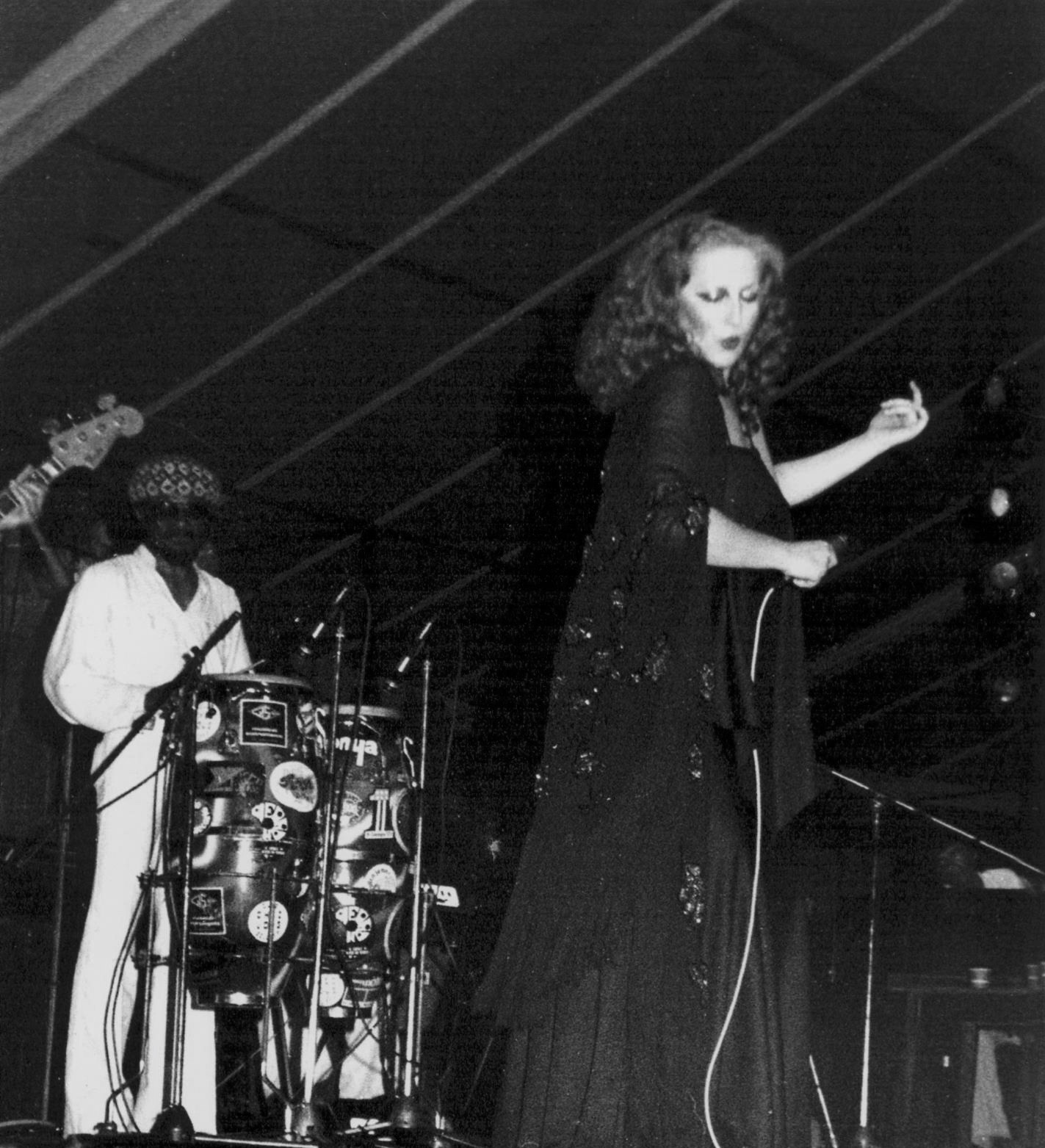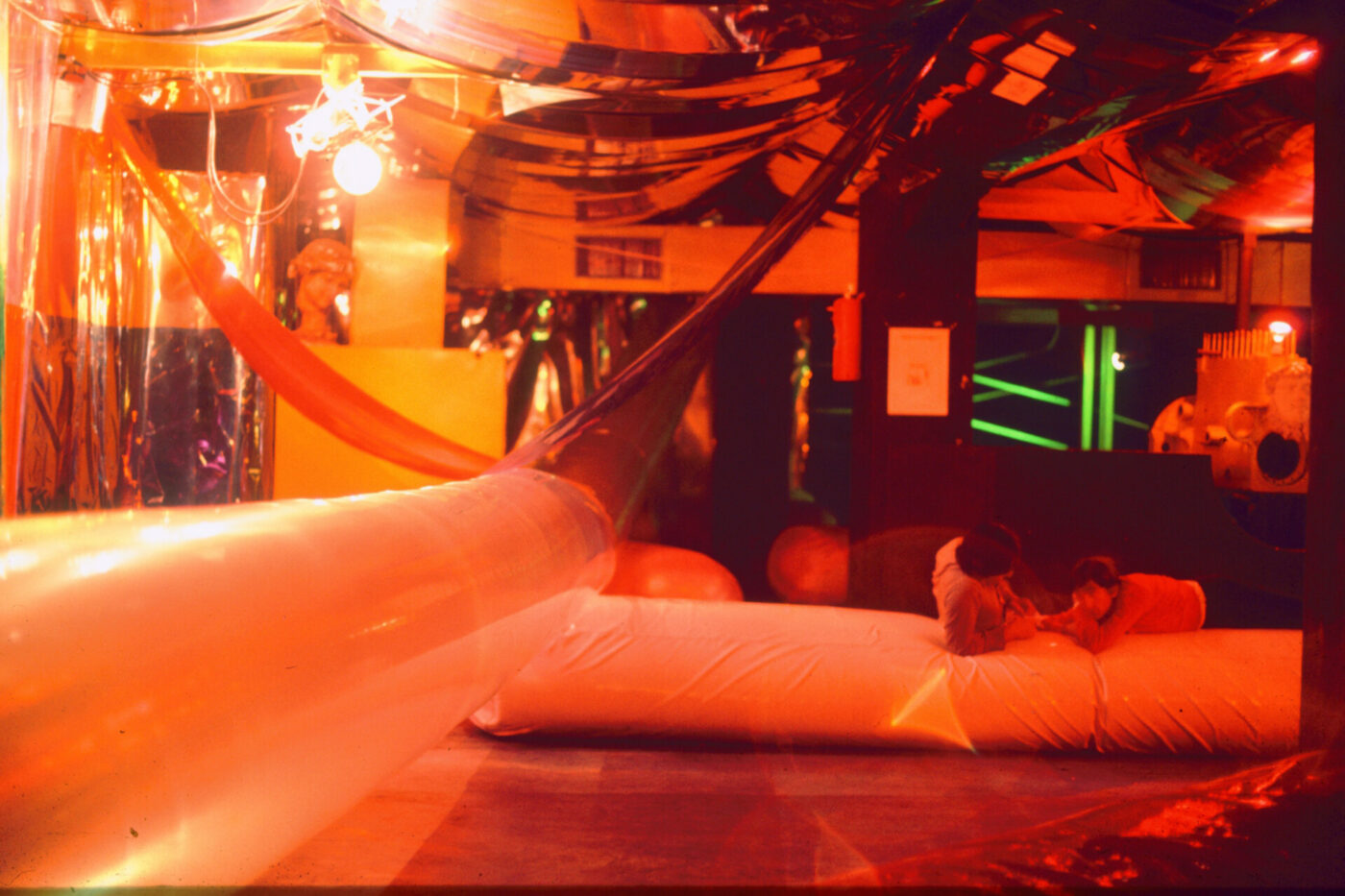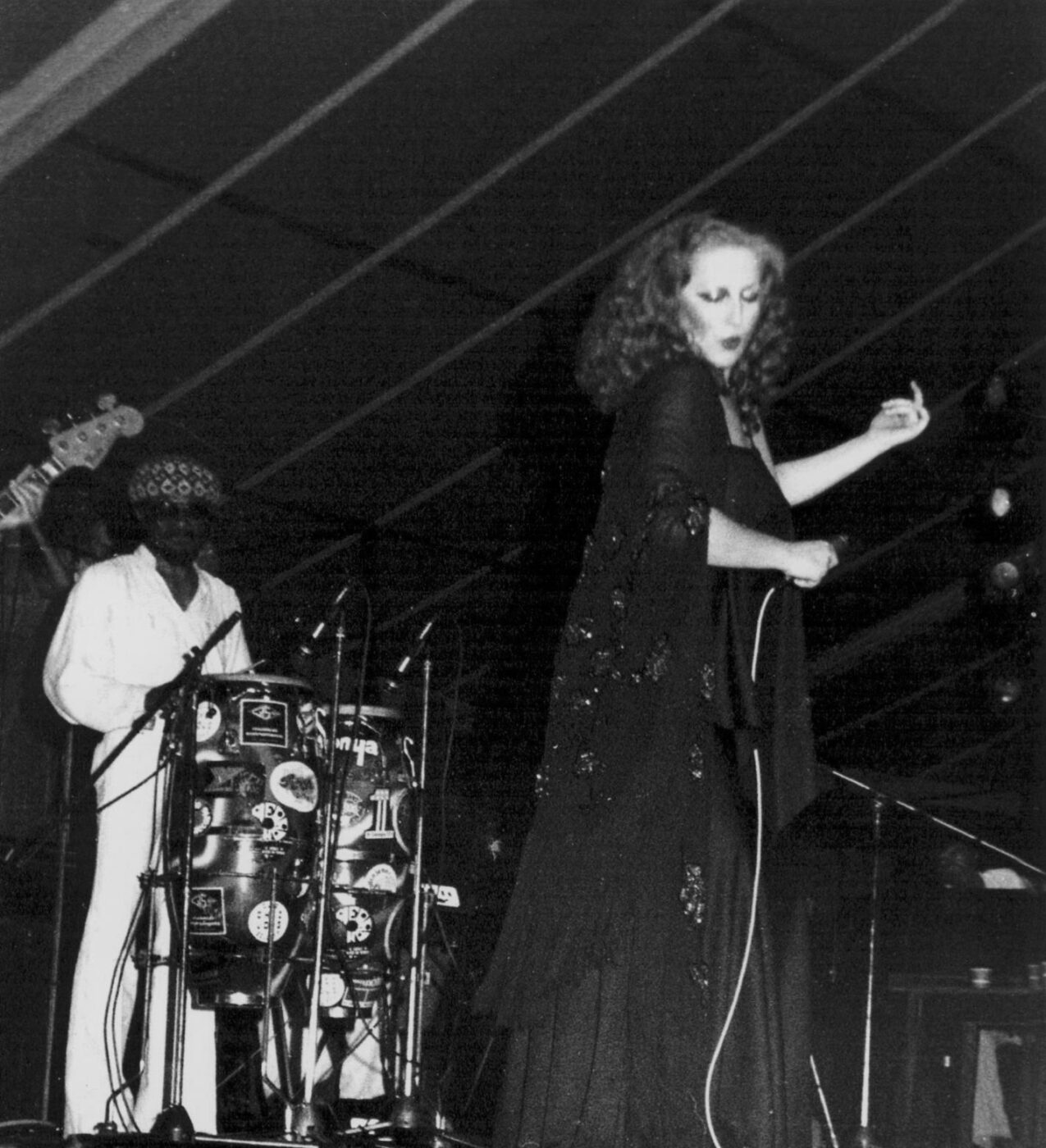If you went out dancing at the nightclubs of 1960s Italy, you’d have brushed shoulders with the who’s who of La Dolce Vita era. In the ‘70s, you might have found Marlene Dietrich performing in a dripping sequin dress, a fur coat draped over her shoulders. In the ‘80s, you could’ve dined with Princess Margaret of England on one side and Avvocato Agnelli on the other. In the ‘90s, you could’ve ended your evening with Jennifer Lopez singing and dancing on a table. Like New York’s Studio 54, now a metonymy for a certain kind of ‘70s hedonistic lifestyle, 20th-century Italy had no shortage of its own star-studded venues that took on a significance far larger than the sheer scope of their space.
Famed nightclubs like Forte dei Marmi’s La Capannina, Marina di Pietrasanta’s La Bussola, and Rome’s Jackie O’ were places where big names could come together—and even be born. La Bussola was, after all, the site where famed singer-songwriter Mina Mazzini took the stage for the first time at 18, surprising the audience with the force of her talent. Another classic female Italian voice, Mia Martini, performed her daring anthem “Padre davvero…” at Viareggio’s Piper 2000—the final rebellious lyric proclaims, “Padre, davvero, ma chi ti somiglia? Ma sei sicuro che sia tua figlia?” (“Dad, really, but who even looks like you? Are you sure that I’m your daughter?”)
These were spaces where it really felt like anything was possible–even political and intellectual change. This was the idea of the Radical Design movement, a group of budding architects, primarily in Florence and Turin, who wanted to re-envision what architecture could look like, without rules, without boundaries. A number of prominent nightclubs sprouted up under their philosophy throughout Italy in the late 1960s, like Florence’s Space Electronic, created by Gruppo 9999, and Forte dei Marmi’s Bamba Issa, which was designed according to a shifting theme. The latter, inspired by a Disney comic book called Donald Duck and The Magic Hourglass, was decked out in “large lanterns, hourglass-shaped furniture, a DJ booth apparently on a flying carpet,” per The Guardian’s Alexis Petridis. One year, it became a desert on the brink of environmental destruction. In another, it was “colonized”, an obvious social critique. One image shows a line of wooden wagons led by camel heads, allegedly “amphibious camels returning to Africa.”
“These architects designed these nightclubs as a place for experimentation—it was a rebellion against what they were being taught in architecture school,” said Catharine Rossi, a design historian and professor of architecture at the University for the Creative Arts’ Canterbury School of Architecture and Design. “They were looking for a different kind of space to do a different kind of architecture, and certainly in the 1960s, the idea of the nightclub or the discotheque was a new kind of architectural and social space.”
What initially captivated Rossi was a photograph of a vegetable garden planted on a dance floor of a nightclub in Florence, in the aforementioned Space Electronic. Rossi, for her part, has since worked on multiple exhibitions on club culture in Italy and more broadly, including “Radical Disco: Architecture and Nightlife in Italy, 1965-1975” at the Institute of Contemporary Arts, London. But Space Electronic was inadvertently the start of it all. The club was so radical that its furniture was made out of the very industrial objects—like dishwasher drums as seats—that had formed its past as an engine repair store. Its bottom floor was once even purposefully flooded, stones placed along its bottom to form a path.
The vast majority of these clubs were shuttered before the end of the 1970s, and while some of the clubs that populate the most famous photographs of these decades still exist, they are often no longer what they once were. What we are left with, rather, is a reminder that nightlife has always had the potential to be more than the sum of its parts.
Today, Italy’s nightlife has more of an underground vibe than the opulence or the avant-garde of the 1960s and 70s. Yet there is still something worth noting in these still-open historic locales that can transport us back to another moment in time. Here, we take a look back at five of the most prominent names… just don’t expect to spot any A-listers if you visit today.

Space Electronic interiors; Courtesy Gruppo 9999/Elettra Fiumi
La Capannina di Franceschi, Forte dei Marmi
Along the Tuscan coast, a trend we’ll see in many of these nightclubs, La Capannina may prove to be one of the oldest names on this list. It was opened in 1929 by Achille Franceschi, who was inspired to transform an old bathing hut on the beach to a bar that would “serve drinks and pastries” and have on hand “a phonograph operated by hand-crank, and tables to play cards,” per the club’s website. La Capannina also helped put Forte dei Marmi on the map–representing the more local and intimate side, with its rustic exterior and classic awnings, of one of the premier beach destinations in Italy. This was a space where everyone and anyone could meet.
In the 1930s, the club brought together a crowd of noble families, like Florence’s famous Rucellai clan and the Sforza family, of Milan’s Castello Sforzesco, as well as those from more creative and literary circles, including Leonida Rapaci and Giuseppe Ungaretti. But only ten years into the club’s existence and on the precipice of war in Europe, a tragic fire took place in 1939 and the structure had to be rebuilt. In fact, quite famously, La Capannina has been closed only a few times in its history—after this fire, during the 2020 pandemic, and in 1942, when Benito Mussolini ordered the premises closed after, according to Il Tirreno, reports of “parties that went on for a day and half, dozens of bottles of champagne consumed, bawdy figures hanging around” reached even the Fascist leader in Rome.
In 1977, the club was purchased by Gherardo Guidi and his wife, Carla, who still have La Capannina today but retained the name di Franceschi in honor of its creator.
“The definition of my club? It’s simple, it’s the history of Italy,” Guidi told Rolling Stone Italia’s Simona Voglino Levy. “I wanted it to always have the name of the person who came up with it, even if my wife and I have been in charge for a long, long time: after all, it’s all thanks to the vision of Achille Franceschi that all of this exists.”
In the years since, it has played host to famous singers like Gino Paoli with “Sapore di sale” and Edoardo Vianello of “Pinne, fucile e occhiali,” among others. Even now, New Year’s Eve revelers can partake in Jerry Calà’s famed show, which, according to Il Tirreno, continues to attract a diverse audience, from “the really young to adults, everyone dancing and singing.”
Anema e Core, Capri
The spirit of Capri’s Anema e Core is perhaps better introduced with a photo than a sentence—just look at Jennifer Lopez belting “I Will Survive” to a crowd, as if she were just one of the girls doing karaoke on a Friday night and not one of the biggest A-listers alive. (JLo haters, I get it, but that she is famous is an objective fact.)
Compared to La Capannina, which has its roots before WWII, Anema e Core sprung up from an entirely different era. 1994 was the year in which the venue was opened by Guido Lembo, “a passionate dreamer that wanted to create a unique club, one that was outside the box and revolutionary,” according to its website. And that started with a no dress code policy, with some guests even dancing barefoot through the night.
Lembo’s plan obviously worked, because over the years, Anema e Core has attracted a guest list of some of the most famous names in fashion, entertainment, and sports, like Giorgio Armani, Naomi Campbell, Chiara Ferragni, Katy Perry, and LeBron James.
A large part of the club’s mystique was Lembo himself, who would end most nights personally inviting some of the locale’s most famous guests, as well as its mere mortals, to sing classic Neapolitan anthems, accompanied by his guitar, per ANSA. In May 2022, the founder tragically passed away, at 75 years old, after a long battle with a serious illness.
He was memorialized in La Repubblica with these words by Pasquale Raicaldo: “The island of Capri has lost one of its most celebrated figures, an icon of the Dolce Vita and a valued chansonnier.” Lembo “changed Capri nights by creating a small spot just behind the famous Piazzetta, in which not just VIPs, actors, singers and entrepreneurs passed through, but also the very residents of the Isola Azzurra.”
La Bussola, Marina di Pietrasanta
We travel from Capri back to Versilia, along the northern Tuscan coast, to Marina di Pietrasanta, where we find La Bussola, a club that quite literally launched some of the country’s greats.
Started by entrepreneur Sergio Bernardini in 1955, even the club’s very first evening was something of a myth: Renato Carosone, he of the canzone napoletana, performed there with his orchestra, per Vogue Italia. He would prove to be the first of many, including Ornella Vanoni, Fred Bongusto, Mia Martini, and Adriano Celentano. But La Bussola may go down in history as the place that started and really fostered Mina’s career. La tigre di Cremona, as she was called, was only 18 when she got on stage there for the first time in 1958. It launched her career, and she never forgot what La Bussola did for her. From 1962 to 1978, Mina held a series of concerts there, including her last before retiring from the spotlight. On August 23rd, 1978, she chose “Grande, grande, grande” as her final song, an ode to a difficult man that she will love regardless.
Bernardini himself received the rental of the venue as a Christmas gift from the then-owner. Convincing Carosone to perform that first night did not go over easily—Bernardini had to up his offer from 90,000 lira to 160,000 just to get Carosone to come, according to the club’s website. And it was Bernardini who—allegedly, per the club—helped launch Mina to stardom, as she performed at first “almost as a joke for her friends.”
The club was so famous that it even got its own documentary, La Bussola: Il collezionista di stelle, directed by Andrea Soldani and co-produced by RAI Cinema. The trailer gives a sense of how significant the club was, even from its opening. Even singer Gino Paoli called it “the first true music hall in Italy.”
“There was nothing like that in Italy at the time,” says journalist and music critic Marinella Venegoni in the documentary.
Jackie O’, Rome
A round-up of Italy’s most historic nightclubs would never be complete without a nod to Rome, its capital. Of all the famous names, Jackie O’, right off the Via Veneto, is perhaps the one that most stands out.
In 1972, Gilberto Iannozzi and his wife opened the club, aiming to provide something of a piano bar that served food. The name was a clear reference to Jacqueline Kennedy, who married Greek shipping heir Aristotle Onassis in 1968 and thus became Jackie O.
Harper’s Bazaar’s Antonia Matarrese describes it like this: “A little bit of a nightclub, a little bit of a restaurant, a little bit of a piano bar, a little bit of a disco, set back from the Via Veneto and the American Embassy.” The venue is practically imbued with pieces of history. Within it sat La Dolce Vita’s very own Marcello Mastroianni and France’s Alain Delon, fashion greats like Valentino and Gianni Versace and even Andy Warhol and the Rolling Stones, Matarrese writes. Liza Minnelli sang “New York New York” on the club’s piano while the Princess of Monaco, Grace Kelly, and Prince Rainier III were among esteemed guests. In one photo, Mick and Bianca Jagger are leaving the club, according to Harper’s Bazaar, Bianca dressed in impossibly chic heels, a blazer, and velvet beret, donning sunglasses despite what appears to be the midnight hour. In another, Andy Warhol, a beacon in his peroxide-blonde hair, looks askance, as a waiter stands behind him holding a tray of drinks.
The locale even received its own listing on the official tourism site of Rome, noting that it “immediately became a point of reference not just for the well-to-do of Rome but also, and above all, a ‘theater’ where international stars recounted their excesses and the greatness of those years.”
Roman actor and comedian Alberto Sordi, affectionately known as the “Re di Roma”, referenced Jackie O’ numerous times in his films, per the site, including in this scene from 1977’s I Nuovi Mostri, where he drops a date off at the club and then mentions the “bombe” cocktails that he has made for him at Jackie’s.
The Tunnel, Milan
We come closer to the present day with Milan’s the Tunnel, which opened in 1995 literally under the platforms of Milano’s Stazione Centrale. Perhaps that is why the interior more closely resembles a warehouse, with exposed vents from the ceilings and a hanging disco ball at odds with the corridor-like, industrial layout. Unlike the other clubs on this list, The Tunnel’s choice of music is of the electronic variety—and its Friday and Saturday night parties are very much still a hotspot.
At the start of the pandemic, Zero’s Giulia Maza penned a love letter to serate at the Tunnel, noting that it was one thing she missed. The club “represents the transformation of a railway depot, a static space, immobile and gray, into one of the most energetic, joyful and lively environments of the Milanese music scene,” she wrote.
“It’s the possibility of partying in a genuine way, that old school habit of switching between a dance, a drink and a cigarette, as well as the possibility of always meeting new people, but at the same time creating a bond of real friendship with the ones you already know,” Maza wrote. “These are the aspects of the Tunnel that most won me over and that define it compared with all the other Milanese locales.”


